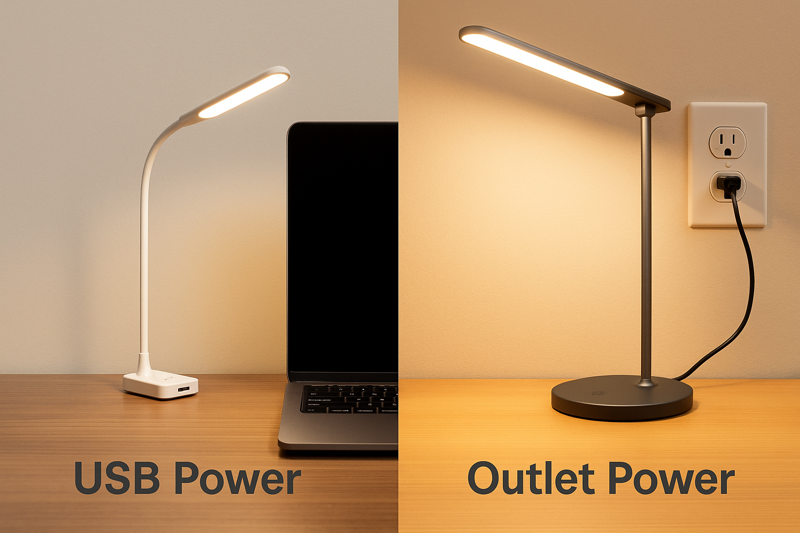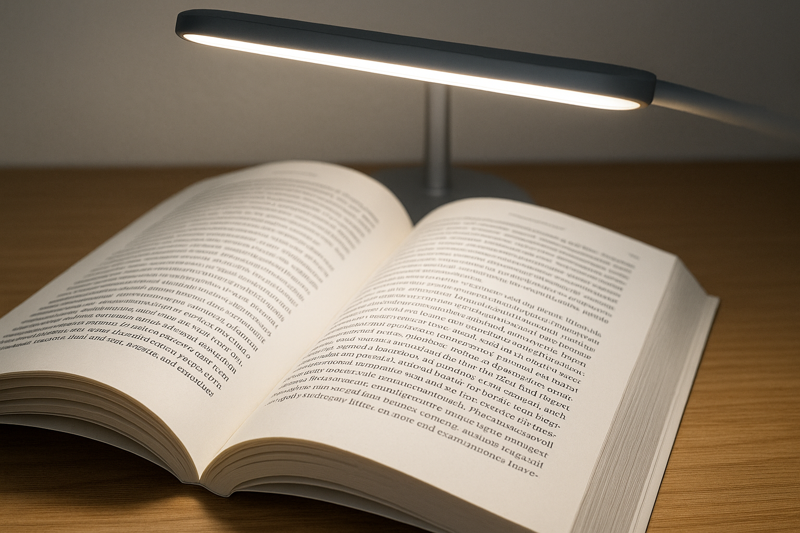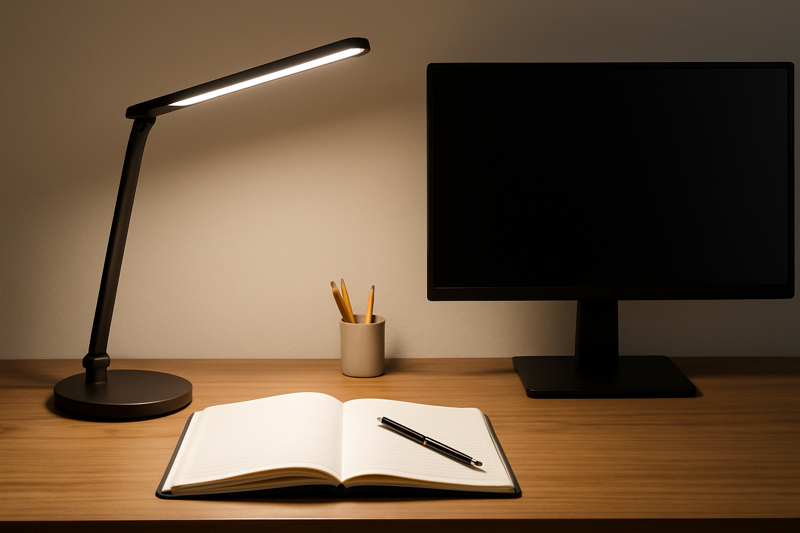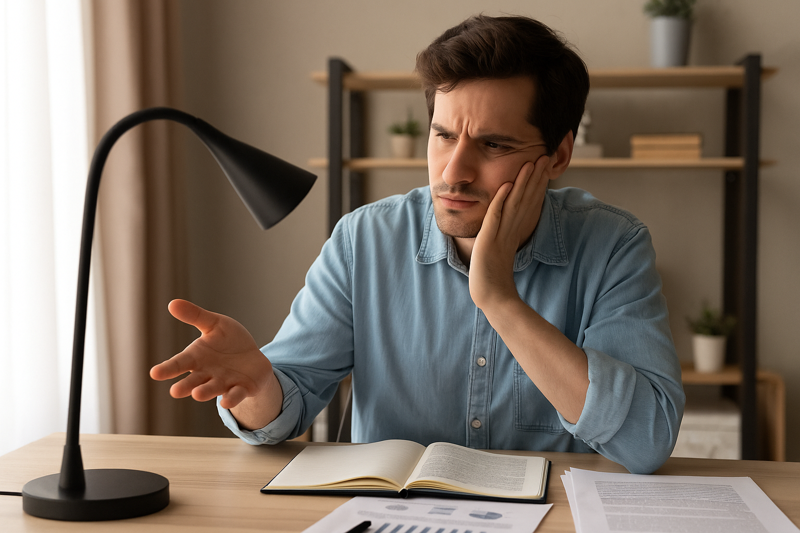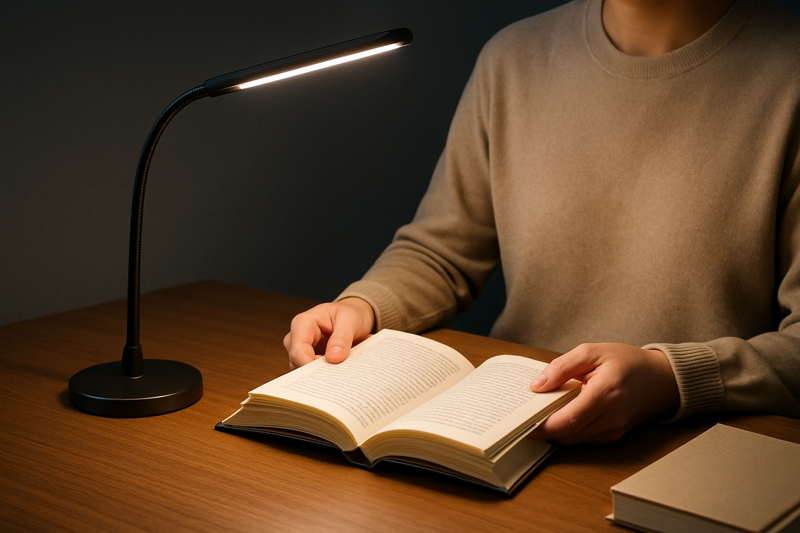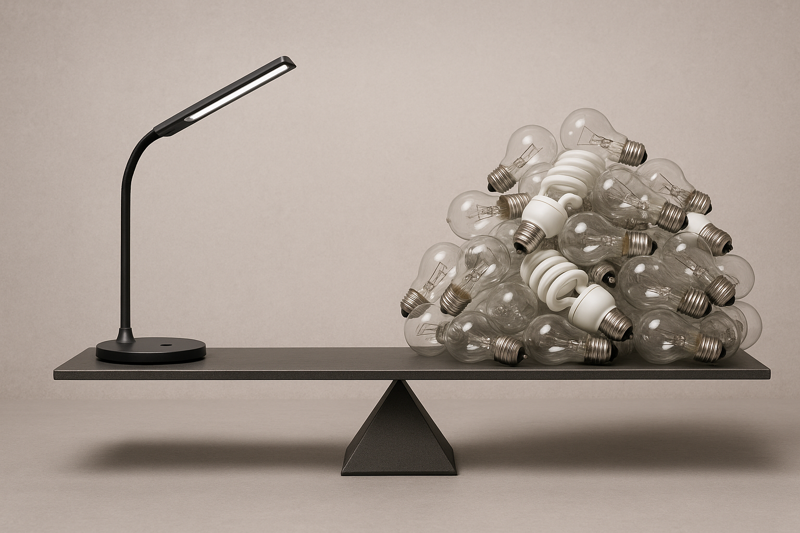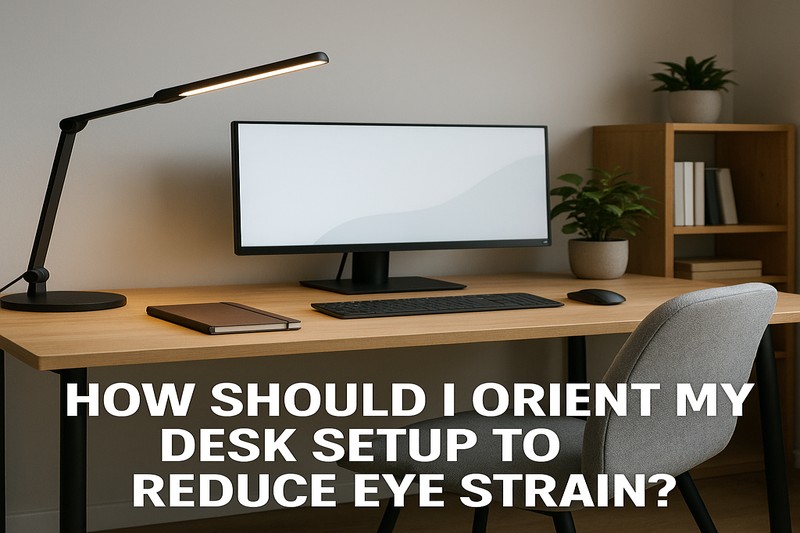
Eye strain at work? Your desk layout might be the hidden cause.
Proper desk orientation improves posture, stabilizes lighting, and helps prevent digital eye fatigue.
Let’s redesign your workspace into a comfortable, eye-friendly zone.
Is Your Monitor Positioned at the Right Distance and Angle?
Sitting too close or too high strains your eyes and neck all day.
Monitors should be 20–30 inches away with the top of the screen at or slightly below eye level.

Finding the Perfect Monitor Position
Many people unknowingly place their screens too high or too close. This forces the eyes to constantly refocus and the neck to tilt. Over time, this leads to fatigue, headaches, and blurry vision1.
Monitor Setup Recommendations2
| Monitor Element | Common Mistake | Best Practice | Why It Matters |
|---|---|---|---|
| Distance | 12–18 inches | 20–30 inches from eyes3 | Eases focus and reduces tension |
| Height | Positioned too high | Top bezel at eye level | Keeps neck and eyelids relaxed |
| Tilt | Flat or upward tilted | Slight backward tilt (10–20°) | Matches natural viewing posture |
I adjusted my screen after weeks of neck pain. The change felt instant—I could finally work without squinting or slouching.
How Should I Place My Desk Lamp for Minimum Glare?
Poor lighting angles cause shadow zones or annoying screen reflections.
Place your lamp 16–18 inches above the surface and opposite your dominant hand.
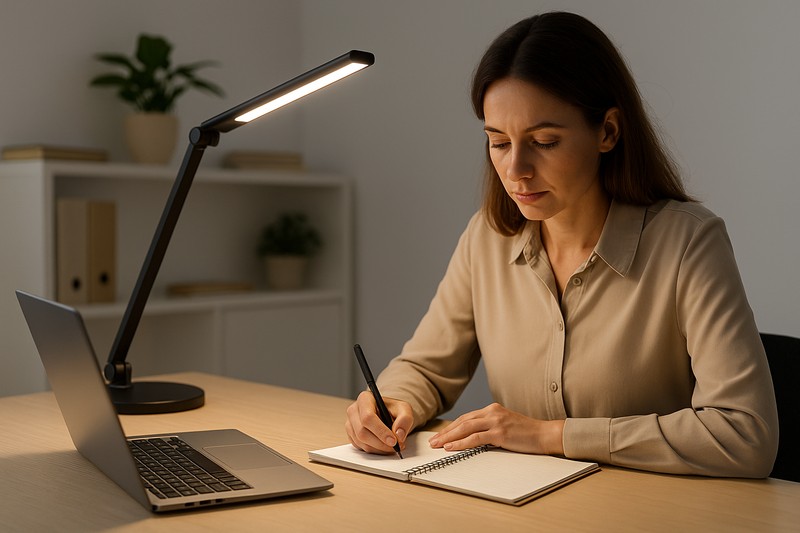
Angling for Clarity
Good lighting complements your monitor4. Bad lighting competes with it. When light hits the screen at a direct angle or reflects off glossy surfaces, it adds strain and reduces visibility.
Ideal Desk Lamp Placement5
| Placement Detail | Common Error | Best Setup |
|---|---|---|
| Height from Desk | Too low or too high | 16–18 inches |
| Angle | Direct downward | 30–45° downward angle6 |
| Side | Same as writing hand | Opposite writing hand (10 or 2 o'clock) |
Once I moved my lamp to the left and raised it slightly, my work surface became evenly lit without glare on the screen.
What’s the Role of Natural and Ambient Light in Eye Comfort?
Too much contrast between your screen and the background causes discomfort.
Balance natural, task, and ambient light to avoid drastic brightness gaps.
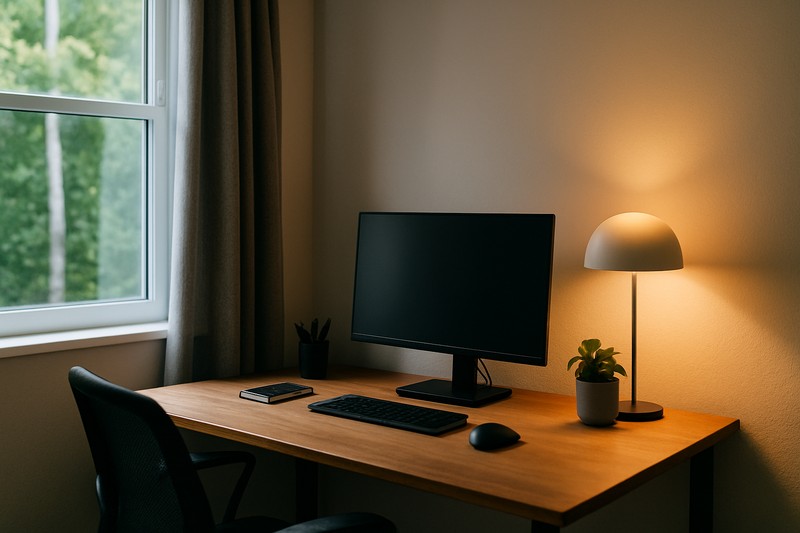
Avoiding Brightness Extremes
When your screen is much brighter or dimmer than the surrounding room, your eyes keep adjusting between the two. This constant adaptation wears them out.
Lighting Balance Tips
| Light Type | Purpose | Setup Advice |
|---|---|---|
| Natural Light | Even base lighting | Sit parallel to window, not facing it |
| Task Light | Highlight work surface | Use focused desk lamp |
| Ambient Light | General room comfort | Use ceiling or corner lamp |
In my home office, I added a low-wattage floor lamp behind me. The soft glow reduced screen glare instantly.
Does Screen Brightness and Color Temperature Affect Eye Health?
Overly bright or cool displays trick your eyes into thinking it’s daytime.
Match screen brightness to room lighting and use warmer tones after sunset.
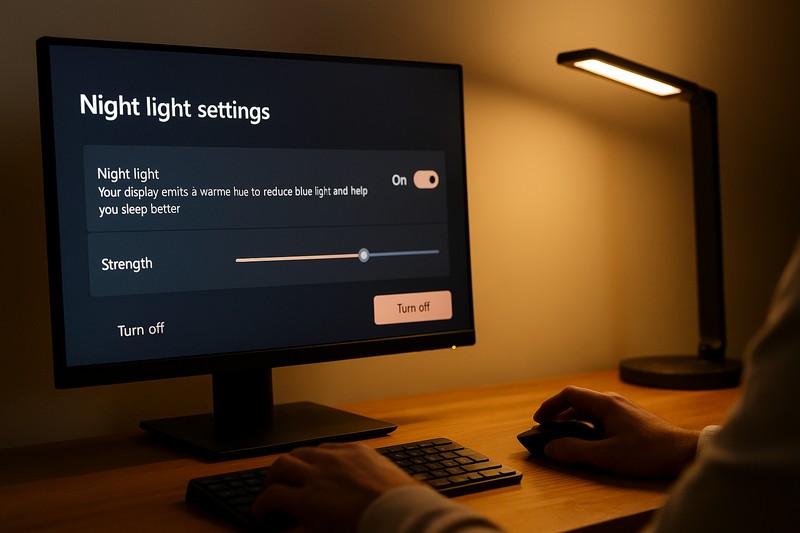
Syncing Display to Circadian Rhythms
Screens emit blue light, which disrupts sleep signals. During the day, it keeps you alert. At night, it confuses your brain into staying awake. Adapting color temperature and brightness is key.
Optimal Display Settings
| Time of Day | Brightness | Color Temperature | Reason |
|---|---|---|---|
| Morning | 150–200 nits | 5000–6000K | Encourages wakefulness |
| Afternoon | 120–150 nits | 4500–5000K | Maintains energy |
| Evening | 80–120 nits | 3000–4000K | Prepares for rest, protects eyes |
My laptop’s auto-brightness used to be jarring at night. Switching to manual warm tones made late work sessions easier on my eyes.
What Desk Accessories Can Help Reduce Visual Strain?
It’s not just about screens—your whole desk ecosystem matters.
Use document holders, monitor arms, and anti-glare accessories to reduce eye movement and refocusing.
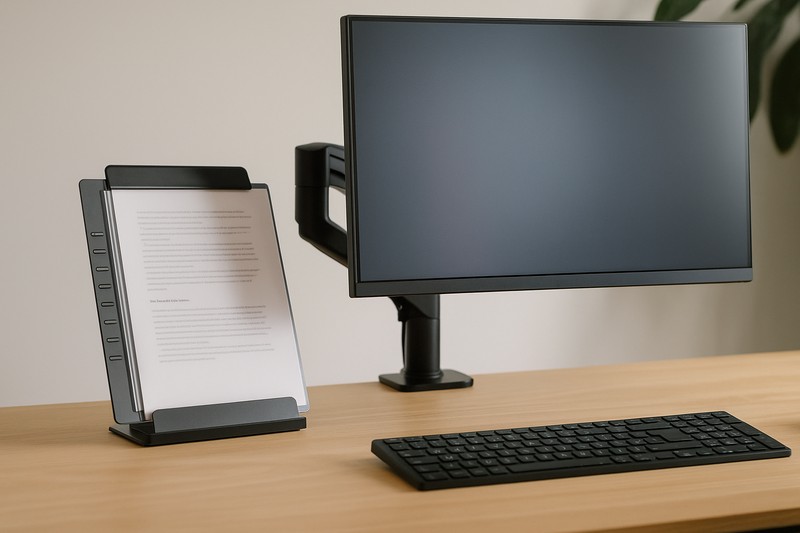
Supporting Eye-Friendly Movement
Every time your eyes jump from paper to screen or back again, they adjust focus and distance. Poor angles or lack of support multiplies this strain over time.
Desk Enhancements to Consider
| Tool | Benefit | Placement Suggestion |
|---|---|---|
| Document Holder | Keeps print material upright | Between monitor and keyboard |
| Monitor Arm | Frees up space, customizable height | Mount screen at eye level |
| Screen Filter | Reduces reflections and glare | Attach to monitor front |
When I added a monitor riser and side document stand, my eyes didn’t have to travel so much. Focus stayed consistent and I stopped rubbing my eyes.
Should I Adjust My Seating to Support Eye Health?
Where and how you sit shapes your visual angle and blink rate.
Sit with your feet flat, back supported, and eyes looking slightly downward at the screen.
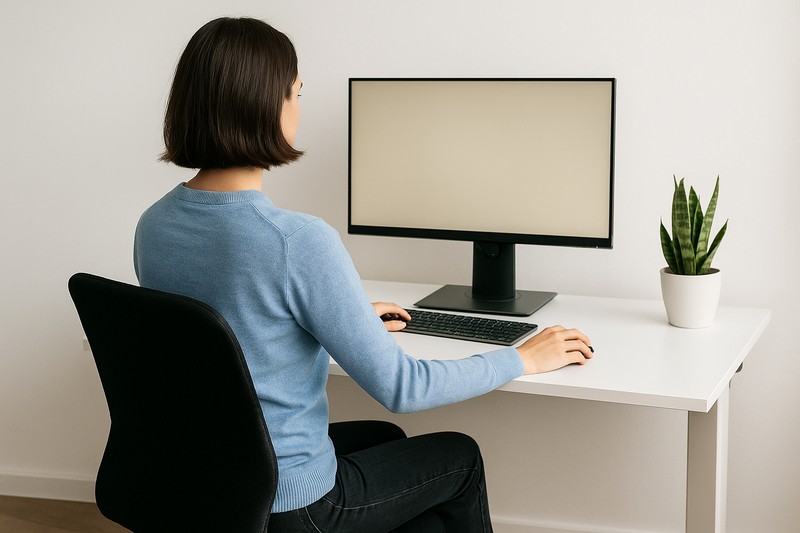
Why Sitting Style Affects Eye Comfort
Poor posture leads to a tilted head and dry eyes. Slouching or leaning forward reduces blinking, which dries your tear film and leads to blurry vision.
Ideal Sitting Setup
| Posture Element | Mistake | Best Position |
|---|---|---|
| Screen Angle | Looking upward | 15–20° downward gaze |
| Chair Back | No lumbar support | Full lower back contact |
| Arm Position | Elbows above wrists | Elbows level, arms supported |
I used to lean forward unconsciously. Adding a cushion to my lower back and raising my chair made a huge difference.
Conclusion
A well-oriented desk supports your eyes, posture, and focus—reshape your setup for long-term comfort and productivity.
-
Discover how proper monitor positioning can alleviate common issues like fatigue and headaches, enhancing your overall productivity and well-being. ↩
-
Explore this resource to learn effective monitor setup practices that can significantly reduce neck pain and improve comfort while working. ↩
-
Understanding the importance of monitor distance can help you maintain eye health and comfort during long hours of screen time. ↩
-
Understanding the benefits of good lighting can enhance your workspace and reduce eye strain, improving productivity. ↩
-
Exploring ideal desk lamp placement can help you optimize your workspace for better visibility and comfort while working. ↩
-
Learning about the significance of lamp angles can help you set up your workspace to minimize glare and enhance lighting efficiency. ↩


